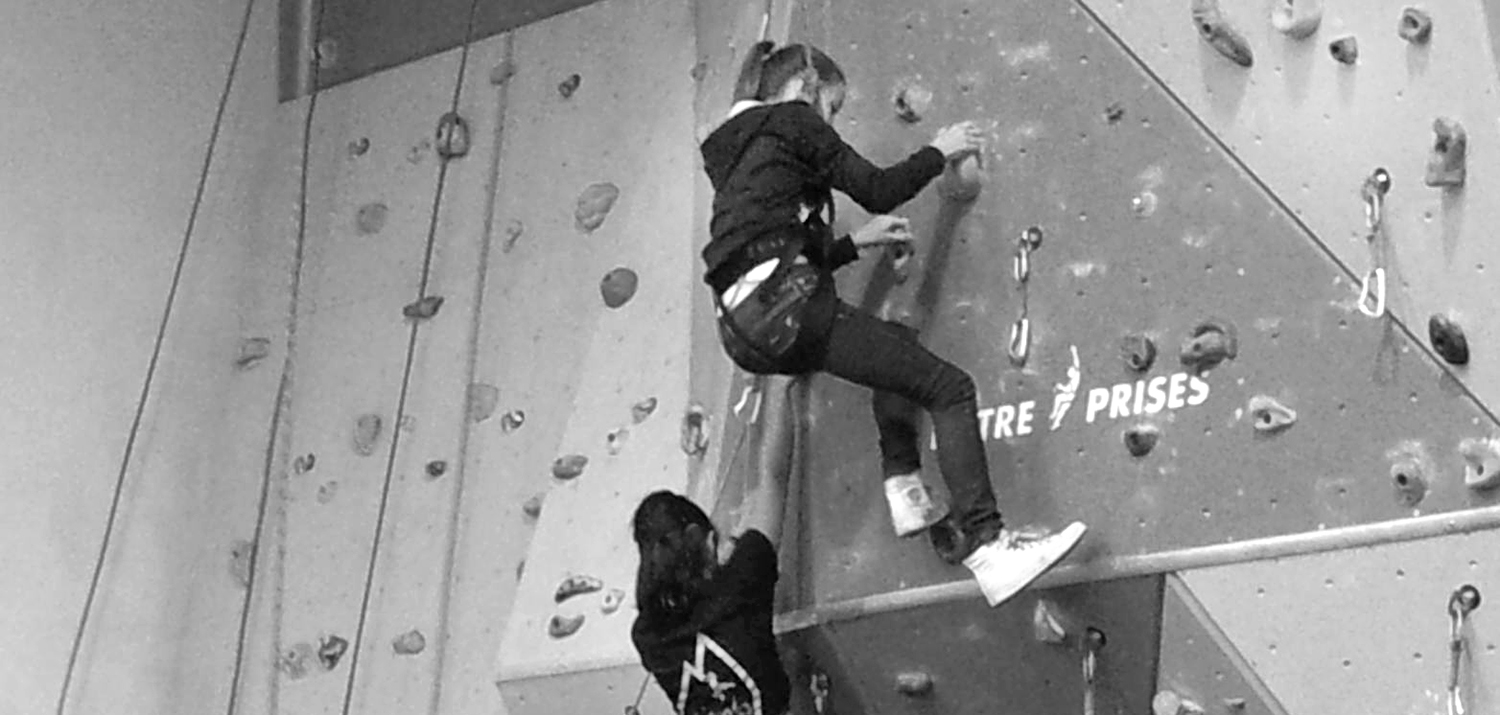 Ask anyone in the Midwest what they know about rock climbing and the first thing they might visualize is the colorful, plastic hold-covered indoor walls that many are familiar with. But if the person you’re asking happens to be a passionate climber the story begins elsewhere.
Ask anyone in the Midwest what they know about rock climbing and the first thing they might visualize is the colorful, plastic hold-covered indoor walls that many are familiar with. But if the person you’re asking happens to be a passionate climber the story begins elsewhere.
Even though the history of climbing dates back a little bit further—John Muir is a name you’ll hear often in the climbing community—the cannon of modern climbing culture was kick started on the floors and on the walls of Yosemite Valley during the golden years of the 1970s and 80s.
But even before that, Camp 4 was the place where Yvon Chouinard, founder of Black Diamond Ltd and Patagonia, first began selling equipment in the 1950s and 60s. Along with Chouinard, Royal Robbins and other “old school” climbers were the first to put up many of the Valley’s first ascents on iconic big walls such as El Capitan and Half Dome.
This opened up the opportunity for a group called the Stonemasters, who opted not to use a lot of the previous generation’s heavy protective equipment, to popularize the modern form of rock climbing. They were the original dirtbags, a once-derogatory term for climbers who lived cheaply, scrounging food and often camping illegally in order to avoid the nine-to-five and climb as much as possible.
Many are not interested in that extreme end of climbing culture, and with the rise of the climbing gym, one doesn’t even need to leave the city in order to get in a good climbing session. The indoor gym has proven appealing, causing sport climbing to boom in popularity over the past few years.
Greg Thomsen of Adidas Outdoor, quoted in an Outside Magazine article, says “… [G]ym climbing has a very strong growth rate. Something like 1,000 people a day are starting to sport climb, according to our research.”
Climbing gyms allow people who are from places like Kansas, Iowa, and Minnesota–to get into a sport once reserved for those fortunate to live out in (or persistent enough to move to) places like Utah, Wyoming, Colorado, and California.
Of course, don’t take my word for it. In an interview with one of his sponsors, professional climber and sport climbing icon Chris Sharma has this to say about his own gym, Sender One: “It’s definitely something I feel super connected to, to start other facilities to promote climbing and get people involved with it. It’s such a positive and healthy activity.”
In other words, climbing gyms are often where more serious climbers share their passion with others . They are places for the diffusion of climbing knowledge and culture, with great responsibility to send newly-minted climbers out into the world climbing safely and in ways that don’t degrade the natural environment.
So why are people trying out this sport in such large numbers? Dedicated climbers often have very philosophical reasons for sticking with the sport. Getting outside and away from the craziness of modern life is also an often-cited justification. Some people are just adrenaline junkies.
But in the relative safety of the gym environment, people go for a fun and unique workout. Climbing requires the exercise of full-body strength. The first piece of advice a new climber will hear is probably, “Use your legs more.” While climbers are known for their developed upper bodies, much of the power comes from the legs.
In fact, climbing is also an aerobic activity. Jill Lee, writing for the Livestrong website, cites a study in 1997 that found “…the heart rate and energy expenditure levels of 14 experienced climbers while climbing on an indoor wall were similar to running at a moderate pace of between eight and 11 minutes per mile.”
But you don’t have to be an experienced climber to get that kind of benefit. If you like to think of your workout in terms of calories burned, the same article mentions that a half-hour of climbing will burn about 300 calories.
If you’re interested in trying it out, one great option for climbing near St. Peter is the wall at Minnesota State University in Mankato. While smaller than Vertical Endeavors in the Twin Cities, it has enough options to keep me busy week after week, and I can personally vouch for the facility.
For people new to climbing, the staff is incredibly helpful. They’ll even belay you. But for those who are nervous about their safety being in the hands of someone they aren’t familiar with, there are auto-belayers available. A day pass is only $12, with the option to rent shoes and a harness.
Other pricing information and opening times are available on the MSU Mankato website. Keep in mind for your first visit, however, that you’ll need to fill out a waiver and go through orientation. I hope to see you out there. Climb on!
-William Metcalf
